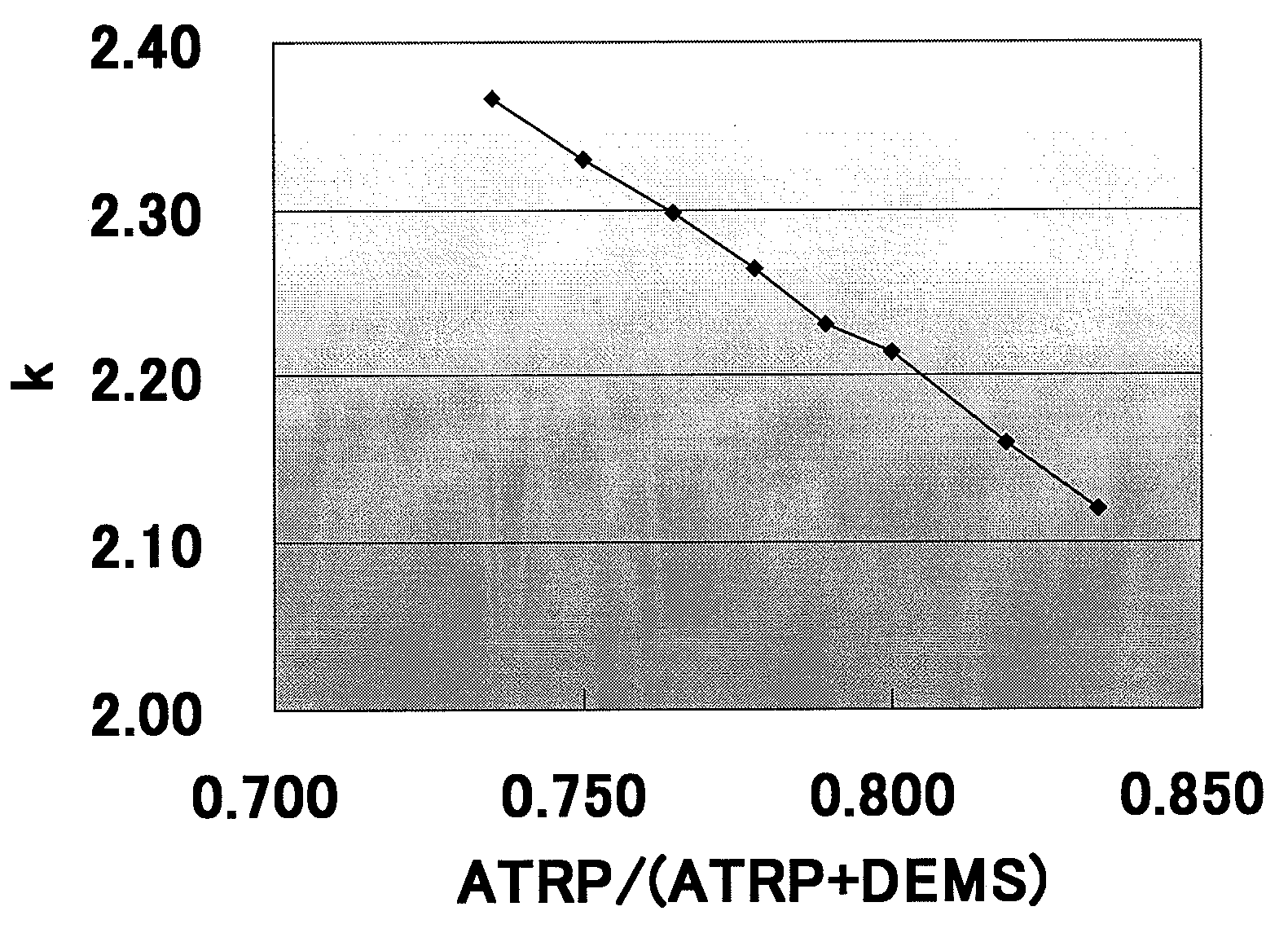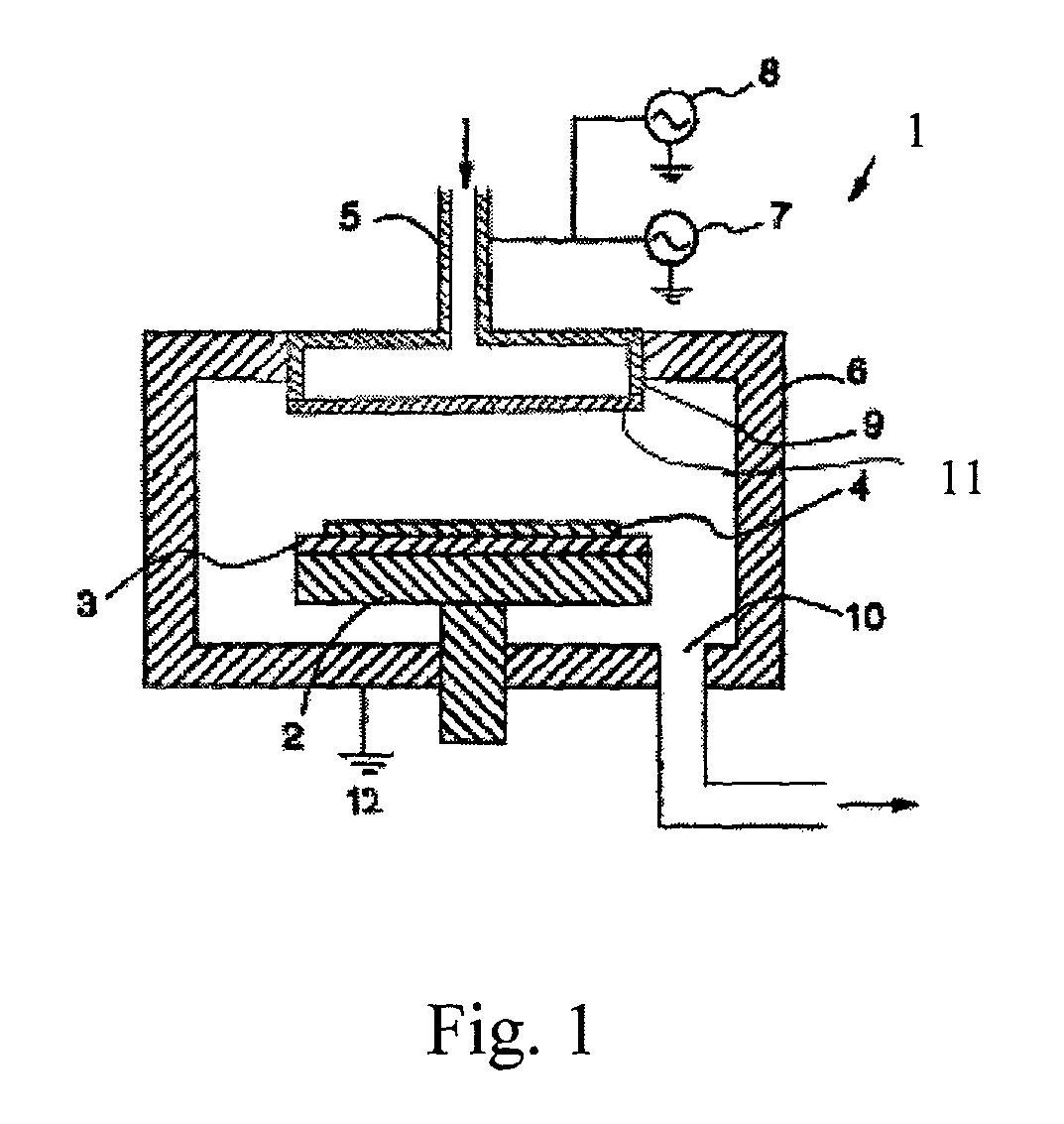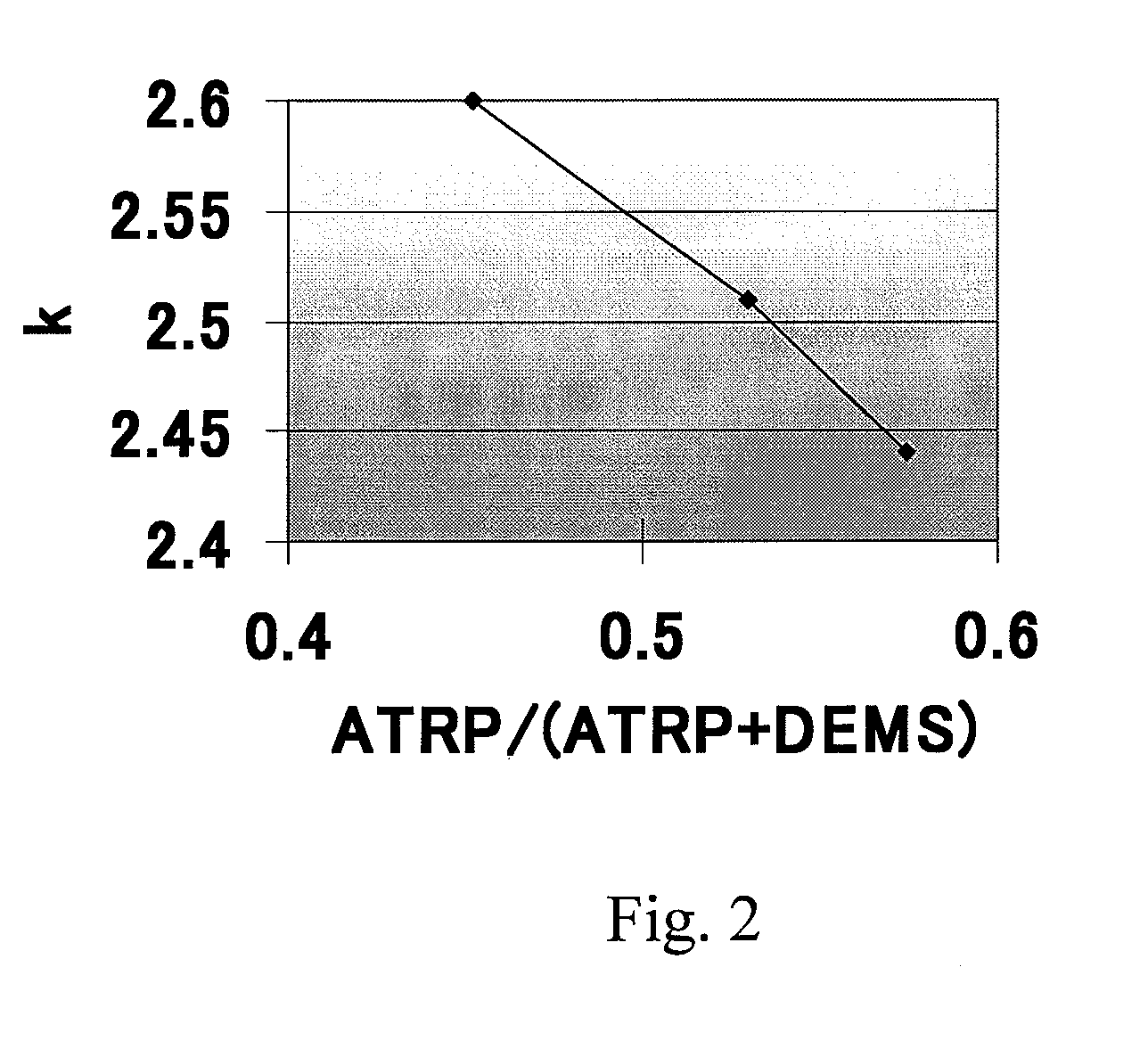Method for forming dielectric film using porogen gas
a technology of porogen gas and dielectric film, applied in the field of simiconductor technology, can solve the problems of high cost of apparatus used in curing process after material application, uneven distribution of material,
- Summary
- Abstract
- Description
- Claims
- Application Information
AI Technical Summary
Benefits of technology
Problems solved by technology
Method used
Image
Examples
examples
[0049]Controllability of the dielectric constant of the cured insulation film by means of the flow rate of each gas was verified for methods for forming an insulation film of low dielectric constant according to the present invention.
[0050](Experiment 1)
[0051]An experiment was conducted in which an insulation film was formed on a silicon substrate of 300 mm in diameter using the plasma CVD apparatus 1 shown in FIG. 1.
[0052]Conditions for experiment
[0053]A: Material gas: DEMS (diethoxy methyl silane), 73 to 75 sccm
[0054]B: Porogen gas: ATRP (α-terpinene), 60 to 100 sccm
[0055]C: Oxidizing gas: O2, 25 sccm
[0056]D: Inert gas: He, 750 sccm
[0057]First RF power supply: 13.56 MHz, 1.0 W / cm2
[0058]Film forming temperature: 300° C.
[0059]Film forming pressure: 960 Pa
[0060]Film thickness: 500 nm
[0061]Curing method: UV (high-pressure mercury lamp)
[0062]Power: 90 mW / cm2
[0063]Curing temperature: 400° C.
[0064]Curing time: 900 sec
[0065]FIG. 2 shows the relationship between the dielectric constant k...
PUM
| Property | Measurement | Unit |
|---|---|---|
| dielectric constant | aaaaa | aaaaa |
| dielectric constant | aaaaa | aaaaa |
| temperature | aaaaa | aaaaa |
Abstract
Description
Claims
Application Information
 Login to View More
Login to View More - R&D
- Intellectual Property
- Life Sciences
- Materials
- Tech Scout
- Unparalleled Data Quality
- Higher Quality Content
- 60% Fewer Hallucinations
Browse by: Latest US Patents, China's latest patents, Technical Efficacy Thesaurus, Application Domain, Technology Topic, Popular Technical Reports.
© 2025 PatSnap. All rights reserved.Legal|Privacy policy|Modern Slavery Act Transparency Statement|Sitemap|About US| Contact US: help@patsnap.com



